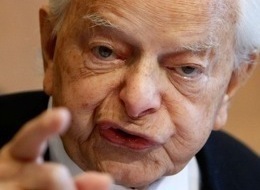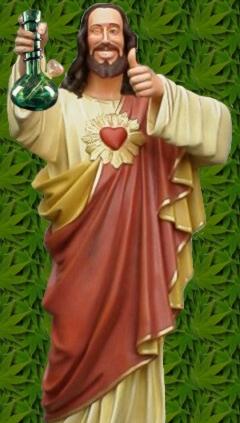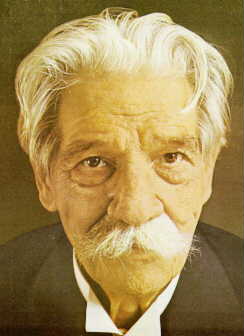Rejection of
Pascal's Wager's
Paul Tobin:
The Twelve Apostles
(enhanced ala the MetaWeb of old)

Maybe there is a case for Rufus - the forgotten 13th apostle,
from Dogma, played by Chris Rock to be made -
Like almost everything else in the gospel accounts of “Jesus'” life, we find problems with the accounts regarding the apostles of “Jesus”:
• Problems with the Names of the Apostles◦ There are fifteen names for twelve slots. A problem not easily reconcilable.• Problems with the Subsequent History of the Apostles
◦ We do not even know if Matthew and Levi are the same person◦ Even in the New Testament, most of the apostles appear as merely names on the list of apostles• Conclusions
◦ The additional details about some of the apostles given in John are unhistorical.
◦ Subsequent Christian tradition had very little of historical value to add.
All these show that by the time the gospels were written very little was known about most of the apostles except their names and even of these there were already divergent traditions. Our suspicion about the historicity of there being twelve apostles is further heightened by the fact that the number twelve itself is a number pregnant with Old Testament symbolism. In short, Christianity which claims itself an historical religion spread by eyewitnesses to the miraculous events of “Jesus” life, has a problem with this: the eyewitnesses themselves may well be fictitious!
The Apostles: Fifteen Names for Twelve Slots
According to all the four gospels and the Acts of the Apostles, “Jesus” selected a band, twelve in number, of disciples to help him to preach his message. Each of the synoptic supplied a list of the twelve apostles while Acts listed the eleven left after Judas committed suicide. In all other respects, the list in Acts is identical to that in Luke, which is to be expected, since they were both penned by the same author. In the gospel of John the names of nine apostles can be found interspersed in the narrative. The table below gives a summary of the four lists.

A glance at the table above will show that the four lists (I count the lists in Luke-Acts as one) are by no means harmonious. The only two lists that tally each other are those of Mark and Matthew. Luke's list differ from these by including a second Judas (son of James) among the twelve. His list excluded the name Thaddaeus found in Mark and Matthew. John's list agrees with Luke in including a second Judas but compounds the problem by including yet another apostle not found in any of the three earlier lists: Nathanael.
The apologists had tried to reconcile these discrepancies. First they claimed that Bartholomew is actually bar Talmai (son of Talmai) and that his name is Nathanael. (It is amazing that this explanation, if true, was first mentioned only in the ninth century CE) And then they claimed that Thaddaeus is the surname of Judas son of James. These reconstructions, of course (the avid will reader would have already gotten used to the method of the apologists by now), have no support whatsoever for it. In other words we do not know if Bartholomew is Bar Talmai, and we definitely do not know that Nathanael was the son of one Talmai. We definitely have no reason whatsoever to even believe that Thaddaeus was the surname of Judas son of James. These reconstructions are proposed solely to reconcile the four lists to one another and save the precious doctrine of Biblical inerrancy.[1]
This is not all. In ancient manuscripts of Mark and Matthew the name of the tenth apostle are rendered in two different ways: Lebbaeus and Thaddaeus. These names are not interchangeable and represent two distinct names. The balance of evidence from these manuscripts point to Lebbaeus being the original reading in Matthew and Thaddaeus in Mark. [2][a]
Is Levi the same as the apostle Matthew ?
Another difficulty arises with the apostle Matthew. The gospel named after him gave an account of his calling:
| Matthew 9:9-10 As Jesus passed on from there, he saw a man called Matthew sitting at the tax office; and he said to him, "Follow me," he told him. And he rose and followed him. And as he sat at the table in the house, behold, many tax collectors and sinners came and sat down with Jesus and his disciples. |
| Mark 2:14-15 (Luke 5:27-29) And as he passed on, he saw Levi the son of Alphaeus sitting at the tax office, and he said to him, "Follow me." And he rose and followed him. And as he sat at table in his house, many tax collectors and sinners were sitting with Jesus and his disciples; for there were many who followed him. |
The Lacuna in the New Testament
Coupled with this uncertainty as to who exactly constituted the original twelve apostles, we are even more uncertain about what their subsequent histories were. In the New Testament, our knowledge of the apostles are mainly limited to Peter and the sons of Zebedee (John and James). According to the gospels Peter, John and James formed the inner circle of Jesus disciples. They were the only ones present to witness the raising of Jairus' daughter (Mark 5:37; Luke 8:51), the Transfiguration (Matthew 17:1; Mark 9:2; Luke 9:28) and the prayers in the garden of Gethsemane (Matthew 26:37; Mark 14:33). [7]
Outside the gospel and Acts we have the genuine epistles of Paul attesting to Peter and John as the "Jerusalem Pillars" (Galatians 2:9). We also know from Paul that Peter was married (I Corinthians 9:5), he was the first to see the risen Jesus (I Corinthians 15:5) and that he traveled outside Jerusalem (Galatians 2:11).
Matthew, surprisingly, is mentioned only once outside the list of apostles given above, in the short passage in the gospel of Matthew 9:9-10. This passage narrates his calling as an apostle followed by Jesus having dinner at his house.
Two apostolic deaths are narrated in the New Testament. Judas Iscariot was the first apostle to have died (Matthew 27:9; Acts 1:18) by committing suicide after the crucifixion of Jesus around 30 CE. The next disciple to have suffered martyrdom was James son of Zebedee (Acts 12:2); he was beheaded by Herod Antipas around 44 CE. [8]
With no exaggeration, the above represents the sum total of (somewhat) reliable information about the apostles in the New Testament. The information about the rest of the apostles are either nonexistent or unreliable.
The apostles Thaddaeus, Simon the Cananean, James son of Alphaeus [b] and Bartholomew appear only in the list of apostles given above. Nothing else is written about them in all of the New Testament! [10]
Added to these there are two other apostles that appear only as names in the Synoptic gospels and Acts: Thomas and Philip [c]. Thus as far as the synoptic gospels and Acts are concerned, these two are merely names, just like the other four above. Indeed the case with Thomas is even worse: it was not even a name! "Thomas" comes from the Hebrew T'hom, which means "twin". The seemingly additional surname in John 11:16 translated in the King James as "Thomas who is called Didymus" adds nothing new, for "didymus" is simply Greek for "the Twin"! Modern translations now give this passage as "Thomas who is called 'the Twin'". There is no evidence in contemporary literature that either Thomas or Didymus was ever used as names during that period. [12]
Andrew is mentioned, in the synoptics, only a little bit more than the other six we have seen above. We are told of his calling (Mark 1:16; Matthew 4:18) and his questioning Jesus at the Mount of Olives (Mark 13:3). [d]
Thus in the New Testament, except in the gospel of John which we will examine immediately below, we are told nothing more about six of the apostles - Thaddaeus, Simon the Cananean, James son of Alphaeus, Bartholomew, Thomas, Philip - except their names! Even Matthew and Andrew barely get any mention beyond their names in the list of the twelve apostles. Indeed these eight apostles are shadowy characters-we know nothing much beyond their names.
John's Treatment of the "Shadowy" Apostles
Three of the shadowy apostles mentioned in the section above, Thomas, Philip and Andrew, are given more prominent roles in the gospel of John. The passages concerning these apostles in John are as follows:
- Thomas
- John 11:16 The Raising Of Lazarus
Then Thomas who was called the Twin, said to his fellow disciples, "Let us go, so that we may die with him." - John 14:5 Jesus' Farewell Discourse at the Last Supper
Thomas says to him, "Lord, we do not know where we are going; how can we know the way?" - John 20:24-29 Story of Doubting Thomas
- John 11:16 The Raising Of Lazarus
- Andrew
- John 1:35-42 The Call of Andrew and Peter
- John 6:8-9 The Feeding of the Multitudes
One of the disciples, Andrew, Simon Peter's brother, says to him, "There is a lad here who has five barley loaves and two fishes. But what are these among so many?" - John 12:21-22 Greek Believers in Jesus
Now among those who went up to worship at the festival were some Greeks. They came to Philip, who was from Bethsaida in Galilee, and said to him, "Sir, we wish to see Jesus." Philip went and told Andrew; then Andrew amd Philip went and told Jesus.
- Philip
- John 1:29-51 The Call of Philip and Nathanael
- John 6:5-8 The Feeding of the Multitudes
Jesus said to Philip "Where are we to buy bread for these people to eat?"...Philip answered him, "200 denarii would not be enough bread for each of them to get a little." - John 12:21-22 Greek Believers in Jesus
- John 14:8 Jesus' Farewell Discourse at the Last Supper
Philip says to him, "Lord, show us the father, and that suffices us"
Many of these incidents given in the gospel of John in which the names of these apostles are included are demonstrably unhistorical.
For instance the presence of Andrew (John 6:8-9) and Philip (John 6:5-8) in the miracle of the feeding of multitudes is merely the addition of names to an incident which never happened. The Jesus Seminar called this event "a narrative ritualization of a common practice" of Jesus sharing a common meal of fish and bread with his friends. [13]
Similarly the appearance of Thomas in the Raising of Lazarus (John 11:16) and his major role in the Doubting Thomas episode of the resurrection narratives are merely addition of his name to fictitious accounts. [14]
On other occasions the names of the disciples are merely added with questions for Jesus to break the monotony of his long discourses. This is the judgment of the Jesus Seminar on the questions of Thomas (John 14:5) and Philip (John 14:9) in the farewell discourse of Jesus during the last supper:
| In the "farewell speeches", the fourth evangelist attributes to Jesus, he occasionally inserts dialogue in order to relieve the monotony of long, uninterrupted monologues. In this segment Thomas is the foil for the question about the way to the place Jesus is going in v.5. Philip functions as the dolt in v.8. These questions and Jesus' answers are completely alien to the historical Jesus, the crafter of parables, aphorisms, and witticisms. Both the words and the contrived narrative framework deserve a black rating. [i.e. "largely or wholly unhistorical" according to the rating system of the Jesus Seminar-PT] [15] |
The appearance of the pair, Andrew and Philip, in the episode of the Greeks who were seeking Jesus (John 12:20-22) faces similar problems. The whole story seems to serve as justification for the existence of Gentiles in the second century church when there was no story of Jesus preaching to them. The obviously unhistorical element of a voice speaking out from the sky (John 12:28-29 - akin to the episode of Jesus' baptism in Mark 1:10-11) simply confirms the whole unhistorical nature of the story. The Jesus Seminar rated this episode as unhistorical (i.e. black). [16]
We are left only with the calling of Andrew/Peter (John 1:35-42)and Philip/Nathanael (John 1:43-51).
Let us look at the call of Andrew and Peter first. We have John the Baptist calling Jesus "the lamb of God" and "son of God" (John 1:29-36). The narrative mentioned that Andrew "heard this" and followed Jesus and later convinced Peter to do the same. Yet this is totally implausible. We know from the old sayings source Q (Luke 7:18-20/Matthew 11:2-3) that when John the Baptist was imprisoned, he actually sent out his disciples to ask Jesus "Are you the one who was to come, or should we expect someone else?" . Thus even after his arrest, the Baptist is still not clear who exactly Jesus was. To him pronounced Jesus as "son of God" and "lamb of God" the moment he laid his eyes of Jesus is being a little, to quote Winston Churchill, "economical with the truth". [17]
For the calling of Philip and Nathanael, there are several difficulties which suggest the story as it stands is unhistorical. Firstly we note that the pair of call stories (Andrew/Peter and Philip/Nathanael) parallels that found in Mark (1:16-20) where we have the pairs of Peter/Andrew and James/John. These strongly suggest that the early oral tradition felt that two stories of the calling of pairs are sufficient for purposes. The oral tradition went through a natural evolution and diverged into two strands where the names of the second pair become Philip/Nathanael in John and James/John in Mark. Secondly, we note that the name , Nathanael, is in itself suspect. As we have seen above, the name is not found in the list of the twelve apostles in the synoptics. The name Nathanael, which means "God gives", is very rarely found in Rabbinic writings. According to John March, these factors strongly suggest that John chose this name "more for theological meaning than historical exactitude". So apart from the name Philip, which is confirmed by the other sources, very little in the story as narrated by John can be confidently said to be historical. [18]
We can safely conclude that the gospel of John adds no new information to the shadowy apostles of the synoptics.
Later Tradition of Apostles
Outside the New Testament, there is even less reliable information about the twelve apostles. In the words of the historian of early Christianity, Professor Henry Chadwick, in the immediate aftermath of the death and "resurrection" of Jesus:
| Most of the twelve disciples disappear from history. Only Peter, John, and James the Lord's brother are more than names. [19] [Italics mine-PT] |
Another historian who has also written on early Christianity, Paul Johnson, concurs.
| Only with Peter can we trace any activity; with John it is barely possible, though we can assume it since he was martyred. And it is quite impossible with the rest. James, Jesus’ brother, is an identifiable personality, indeed an important one. But he is not an "apostle", nor one of the "twelve". [20] [Italics mine-PT] |
To fill this lacuna of stories regarding the apostles, during the period spanning roughly 150-250 CE, five apocryphal acts were written. These were The Acts of Peter, The Acts of John, The Acts of Andrew, The Acts of Thomas and The Acts of Paul. These are all works written chiefly to entertain, to instruct and to spread Christian propaganda. Very little in these works can be considered historical. [21]
- The Acts of Peter is preserved today only in scattered fragments in various languages. That the work is largely a fictional invention can be seen from its obsession with virginity and morbid hatred of sex-a trend that was developing during the time it was written. However it does seem to preserve some authentic tradition of Peter's martyrdom in Rome. According to this work, Peter was crucified on an upside down cross during the persecution of Nero. [22]
- The Acts of John is of little historical value since it confused the John the seer of Revelation with the apostle John. [23] John the son of Zebedee is some sort of an enigma. Tradition from late second century (Ireneaus [c130-c200] and Clement of Alexandria [c150-c215]) asserted that John died in Ephesus during the reign of Trajan which would put his death around the year 98 to 117. [24] There is an alternate tradition however, that placed his death very early; stating that he was martyred, together with his brother James, in 44 CE. [25]
- The Acts of Andrew is another work of Christian fiction. It story of Andrew's martyrdom in Patras Greece is generally considered unhistorical. The tradition that he was crucified on an X-shaped cross (St. Andrew's Cross) is based on an even later tradition; around the thirteenth century. [26]
- The Acts of Thomas narrates the story of Thomas' mission to India. Some scholars, about a century ago, argued for this historicity of this Acts due to mention of an actual Indian King, Gundaphorus in the work. [27] However this view is no longer held today. The presence of the reference to actual historical personae is due to the fact that during the time the Acts of Thomas was written, there was a lively commercial and cultural exchange between Edessa, where the Acts was composed, and India. Thus there was ample opportunity for the author to pick up historical details to weave into his narrative. [28] One of the main reason why the Acts of Thomas is considered unhistorical is due to the presence of late Gnostic, Mandean and Manichean influence in the work. [29] [e]
| History of the Church 3:1 Meanwhile the holy apostles and disciples of our Savior were dispersed throughout the world. Parthia, according to tradition, was allotted to Thomas as his field of labor, Scythia to Andrew, and Asia to John, who, after he had lived some time there, died at Ephesus. Peter appears to have preached in Pontus, Galatia, Bithynia, Cappadocia, and Asia to the Jews of the dispersion. And at last, having come to Rome, he was crucified head-downwards; for he had requested that he might suffer in this way. |
It should be recalled that Eusebius (c260-c340) was the ecclesiastical historian of early Christianity. He had access to the vast library of early Christian works at Caesarea which he cited and quoted extensively in this book. Yet when it comes to the subsequent career of the apostles, all he could muster was the same four names as the apocryphal Acts: Thomas, Andrew, John and Peter! Furthermore he gave no indication that his list was incomplete or that it was merely an excerpt. [30]
After the publication of these five apocryphal Acts, the next generations of Christian hagiographers concocted even more grotesque and less believable Acts. There were Acts of Philip, Acts of Peter and Andrew, The Martyrdom of Matthew, The Acts of Andrew and Bartholomew and so on. Schneelmacher's New Testament Apocrypha Volume II listed forty of such works. These works were mainly expansions of the original five apocryphal Acts with no historical value. [31]
Needless to say, the traditions regarding the later ministries of the "shadowy" apostles are late and extremely unreliable. For instance, the apostle Matthew was supposed to have been martyred (according to different traditions) in Ethiopia, Persia and Pontus! [32] Like Matthew, Bartholomew also managed to die multiple deaths of martyrdom. He was supposed to have been martyred in India and in Armenia. Contradictory, late and unreliable traditions exist about all the apostles. [33] History knows nothing about them.
Conclusions
We thus know nothing about the subsequent careers of the apostles except for Peter, James and John. Even as early as the end of the first century, when the gospels and Acts were first composed, we have clear evidence that information regarding the apostles was already hard to come buy. We find fifteen names for the list of twelve apostles. Even if we confined ourselves to the twelve names given in Mark and Matthew the problem is not resolved. For at least six of these names are nothing more than names; we know nothing about Thaddaeus, Simon the Cananean, James son of Alphaeus, Bartholomew, Thomas and Philip. With Matthew and Andrew we know only slightly more: that Matthew was a tax collector when he was called and that Andrew was Peter's brother. With Judas, there are problems with the whole story of his betrayal. [Which we examine elsewhere.]
Subsequent traditions have no more to add to these. The early apocryphal acts of Peter, John, Andrew and Thomas, contain very little that is historically reliable. The later ones were even worse and are merely fanciful expansions of these earlier works. Even the ecclesiastical historian Eusebius, could do no more than repeat the four names of the apocryphal acts when recounting what he knows about the subsequent careers of the apostles.
Two possibilities present themselves. The number twelve, as we have noted has rich symbolic value in Judaism being equal to the tribes of Israel. This means that the number twelve could be one that tradition assumed the number of disciples to be. [f] The other possibility, more damning, I think, to Christian belief, is that the mission of the twelve was a failure. We know today that a large part of Christian theology has its roots in the epistles of Paul who was not one of the original twelve apostles. The original apostles, the ones actually hand-picked by Jesus, made no impact on Christian history whatsoever. [34]
Notes
| a. | The editors of the UBS Greek New Testament decided to leave Thaddaeus as the reading for both Mark 3:18 and Matthew 10:3. However as one of the editors explained the issue was not that simple. While they rated the Thaddeus reading in Mark as "A", meaning they are certain that this was the original reading here, the issue was "more difficult" with the reading in Matthew. There were four different types of reading here: "Thaddaeus", "Lebbaeus", and "Lebbaeus who was called Thaddaeus" and "Thaddaeus who was called Lebbaeus". Finally the editors opted for "Thaddaeus" but rated the reading a "B". [3] |
| b. | The identification of James the son of Alphaeus with James the Less (Mark 15:40) or with James the brother of Jesus (Mark 6:3) is pure conjecture. [9] |
| c. | Not to be confused with Philip, one of the seven Hellenist deacons in Acts (6:5; 8-4-50; 21:8). |
| d. | Even this meager information is considered suspect by scholars. The Jesus Seminar called the whole backdrop of the thirteen chapter of Mark (at the Temple and then at the Mount of Olives) a "fictive setting" and the verses containing the question of Andrew of Peter (Mark 13:3-4) as a continuation of the fictitious narrative framework. [11] |
| e. | We will not be discussing the Acts of Paul here as he was not one of the twelve apostles. |
| f. | Sources hostile to Christianity preserved different numbers of apostles. The second century critic of Christianity, Celsus, mentioned that there were ten (or eleven) apostles. (see Origen Against Heresies 2:46 & 1:62) The Babylonian Talmud listed only five apostles: Matthai, Nagai, Nezer, Buni and Thoda (Sanhedrin 43a). [35] |
References
| 1. | Cadoux, The Life of Jesus: p105 Craveri, The Life of Jesus: p150-151 Nineham, Saint Mark: p117 Riedel et.al., The Book of the Bible: p437 |
| 2. | Fenton, Saint Matthew: p152 Nineham, Saint Mark: p117 |
| 3. | Metzger, A Textual Commentary on the Greek New Testament: p26, 81 |
| 4. | Fenton, op. cit: p136 |
| 5. | Craveri, op. cit: p153 |
| 6. | Nineham, op. cit: p99 |
| 7. | Riedel et.al., op. cit: p428 |
| 8. | Livingstone, Dictionary of the Christian Church: p267 Riedel et.al., The Book of the Bible: p435 |
| 9. | Brownrigg, Who's Who in the Bible: The New Testament: p146 |
| 10. | Goodspeed, The Twelve: p19, 41-44 Riedel et.al., op. cit: p437-438 |
| 11. | Funk, et.al., The Acts of Jesus: p133-134 |
| 12. | Goodspeed, op. cit: P 25, 43 |
| 13. | Funk, et.al., op. cit: p387 |
| 14. | Funk, et.al., op. cit: p409-411, 422 Ludemann, Jesus After 2000 Years: p510, 582 |
| 15. | ibid: p422 |
| 16. | ibid: p415 |
| 17. | ibid: p368-369 |
| 18. | ibid: p370-371 Ludeman, op. cit: p429-433 Marsh, Saint John: p135-136 |
| 19. | Chadwick, The Early Church: p17 |
| 20. | Johnson, History of Christianity: p33 |
| 21. | Goodspeed, op. cit: p146, 163 Scneemelcher, New Testament Apocrypha Vol II: p78-83 |
| 22. | Goodspeed, op. cit.: p157 Perkins, Peter, Apostle for the Whole Church: p141-144 Riedel et.al., The Book of the Bible: p431 |
| 23. | Goodspeed, op. cit.: p152 |
| 24. | Eusebius: History of the Church: 3:23 & notes p380 |
| 25. | Craveri, The Life of Jesus: p152 |
| 26. | Eusebius: History of the Church: notes p344 Livingstone, Dictionary of the Christian Church: p20 Riedel et.al., The Book of the Bible: p433 |
| 27. | Streeter, The Primitive Church: p29-30 |
| 28. | Scneemelcher, op. cit: p325 |
| 29. | Goodspeed, op. cit.: p158 |
| 30. | Scneemelcher, op. cit.: p19 |
| 31. | Goodspeed, op. cit.: p163-164 Scneemelcher, New Testament Apocrypha Vol II: p426 |
| 32. | Riedel, op. cit.: p437 |
| 33. | Brownrigg op. cit: 42 Ferguson, Encyclopedia of Early Christianity: p168 |
| 34. | Guignebert, Jesus: p221 Nineham, Saint Mark: p115 |
| 35. | Scneemelcher, op. cit.: p17 |
















